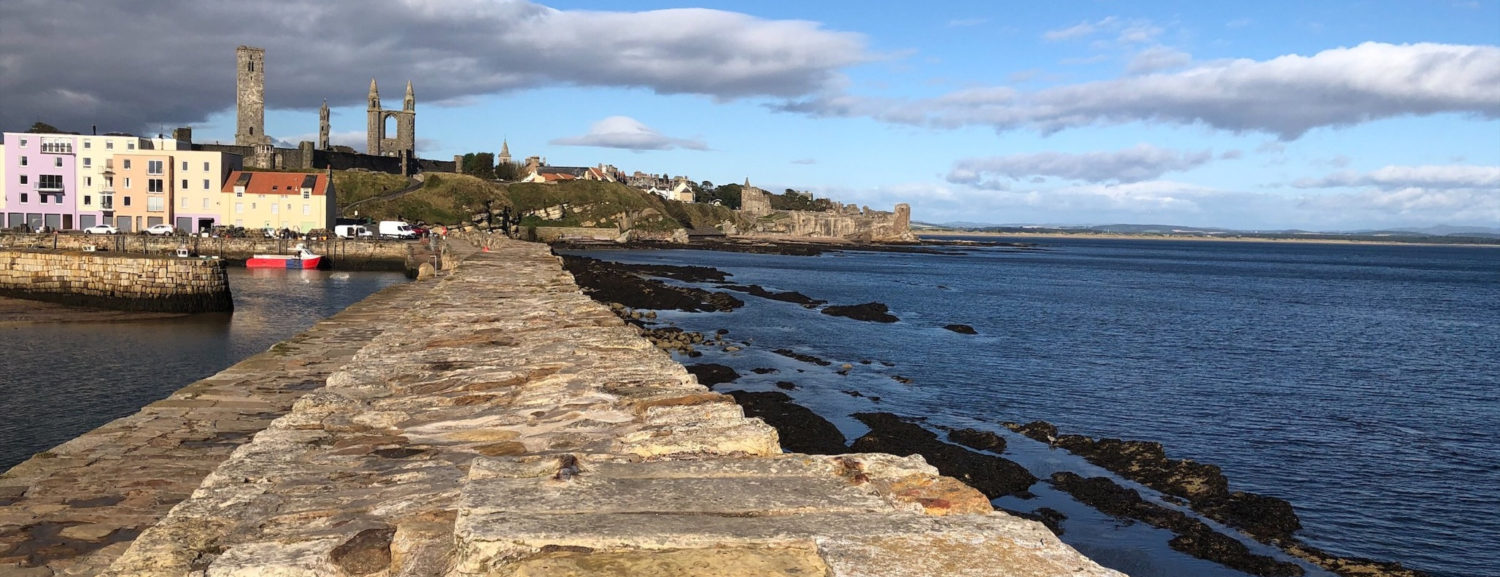Dr John Adamson (12 December 1809 – 11 August 1870) was born in St Andrews. After his medical studies in the University of St Andrews and the University of Edinburgh, in 1829 he qualified with a licentiate diploma (LRCS) from the Royal College of Surgeons of Edinburgh. Afterwards, Adamson moved to Paris where he opened up a practice and was employed as a surgeon to a private ship on a voyage to China around 1833. After his return from China, in 1835 Adamson set up a permanent practice in St Andrews. He helped found the Literary and Philosophical Society’s Museum and remained its curator from its beginning in 1838 until his death.
St Andrews obtained the opportunity to play a major part in the early development of photography, through Sir David Brewster’s close connection with William Henry Fox Talbot, the inventor of an early photographic process named calotype. Whilst Adamson was working tirelessly on improving public health, through his friendship with Sir David Brewster he became heavily involved with studying the calotype and played a leading role in conducting research. He managed to contribute significantly by “discovering how to control a process that remained remarkably difficult”. He was also responsible for the first calotype portrait in Scotland in 1840-1842 (most likely in May 1842), which is now stored at the National Museum of Scotland in Edinburgh. Adamson educated his younger brother Robert Adamson about the calotype process, which Robert, in collaboration with David Octavius Hill, used later to produce over 2500 photographs from 1843 to 1848. He also taught Thomas Rodger the technique and art of photography and inspired him to become a pioneering photographer. Adamson attained his M.D degree at University of St Andrews in 1843. Later in 1851, he changed to practicing and studying the collodion process, another early photographic process. In 1870, Adamson died in Dulnain Bridge, Moray. As part of his legacy, a collection of photographs taken by Dr John Adamson is available at here.
The calotype, also named talbotype, was discovered by William Henry Fox Talbot in late 1840 and introduced to the public in 1841 as a developing-out process, a concept pioneered by the daguerreotype process introduced in 1839. For the process per se, an extremely faint or completely invisible latent image is required to be produced in the camera, which can be finished in a minute or two if the subject is in sufficient sunlight. The calotype paper, covered from further exposure to daylight, is then removed from the camera and the latent image will be chemically developed into a fully visible image. The calotype produces a translucent original negative image from which multiple positives can be made by simple contact printing. See more detail about the calotype here. A collection of calotype negatives in St Andrews is available at here.
References
“Story”. The Adamson. Archived from the original on 30 April 2013. Retrieved 18 July 2012.
https://web.archive.org/web/20130430064050/http://www.theadamson.com/story
“Adamson, John (1809–1870)”. National Library of Scotland. Retrieved 18 July 2012.
“Dr John Adamson M.D. of St Andrews”. University of St Andrews. Archived from the original on 23 December 2012. Retrieved 18 July 2012
Stevenson, Sara (1 January 2003). Facing the light: the photography of Hill & Adamson. Scottish National Portrait Gallery. p. 15. ISBN 978-1-903278-32-1. Retrieved 18 July 2012.
John Adamson 1810-1870 and early photography at St Andrews:
https://research-repository.st-andrews.ac.uk/handle/10023/18901
